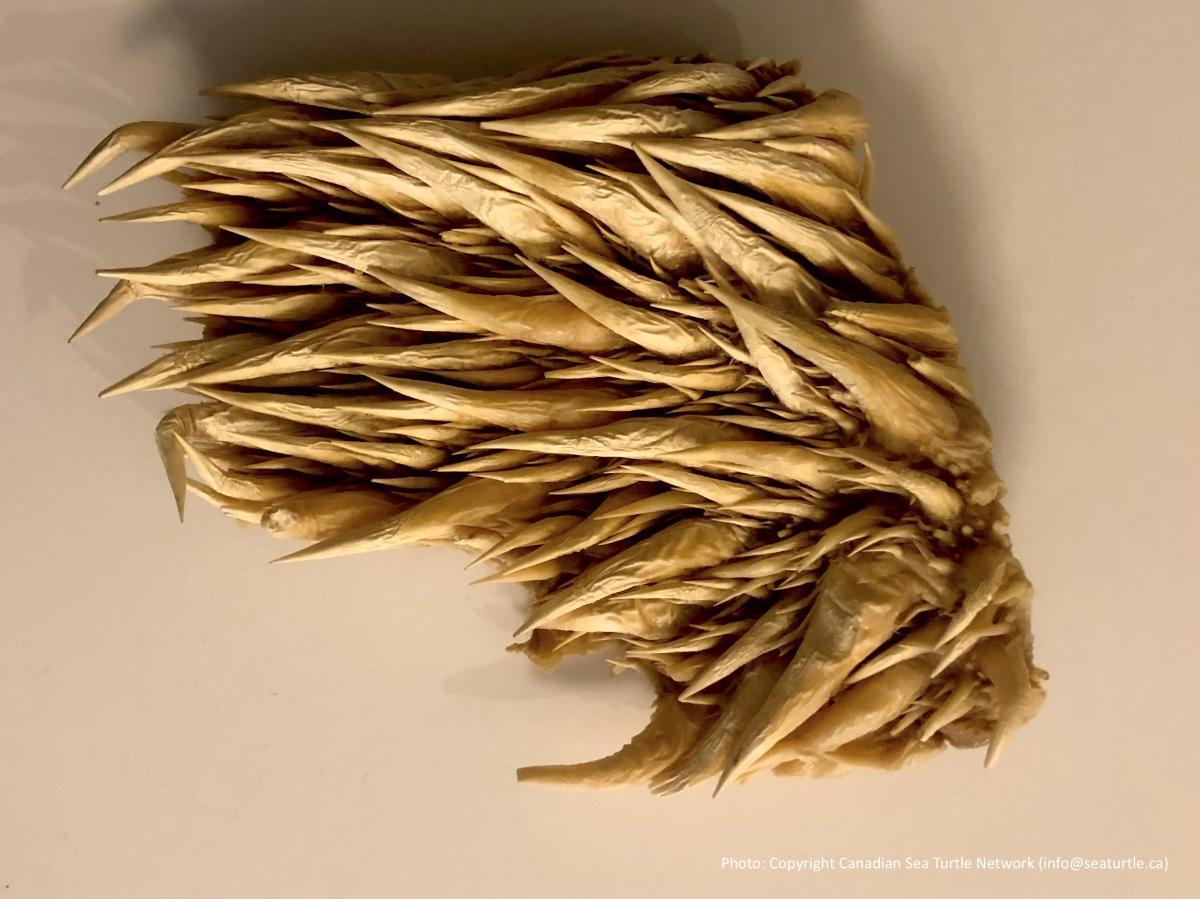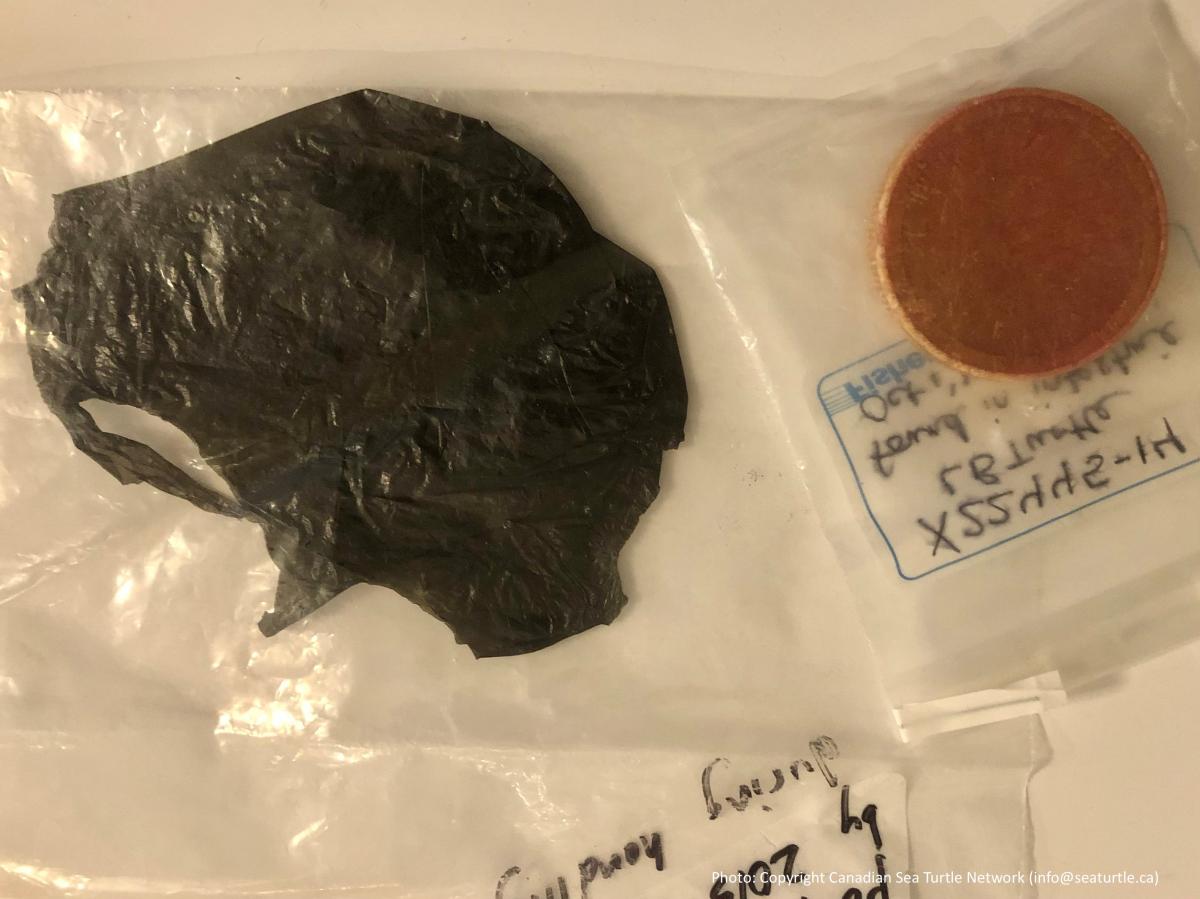To mark the launch of Oceana Canada’s new report Drowning in Plastic: Ending Canada’s contribution to the plastic disaster campaign director Kim Elmslie hosted a live chat with Canadian Sea Turtle Network executive director Kathleen Martin.
Kim and Kathleen talked sea turtles and plastics – and how the two, unfortunately, often interact. Watch now or scroll down to catch some of the key takeaways from their conversation.
Please note: This interview transcript has been edited and condensed.
Kim: You have an amazing job! Tell us more about how the Canadian Sea Turtle Network got started?
Kathleen: For a long time, until the late 90s, scientists didn’t believe that sea turtles were in Canadian waters – on purpose, anyway. It was formerly believed that sea turtles were lost when they were found here in cold Canadian waters.
We were hearing about sea turtles here though, so we decided to speak to fishermen. We put posters up at fishing wharfs asking fishermen to call us if they saw sea turtles. We still do this, every year. When we began our work in the summer of 1998, fishermen reported 171 geo-referenced sightings of sea turtles to us, including the date and time of the sighting, as well as some of the first photographs of free-swimming leatherback turtles on record. Up until that summer, there had only ever been 70 sightings of leatherbacks in Atlantic Canadian waters in total. So, in one summer, with citizen science and the help of these generous fishermen, we rewrote the history of this dinosaur. It profoundly changed sea turtle science.
Kim: Tell us more about the sea turtles themselves. How many species come into Canadian waters?
Kathleen: Generally, we see four different species in Canadian waters. We see leatherbacks (inshore) and loggerheads (offshore, and usually only seen by fishermen) with greatest frequency. We also get green sea turtles and Kemp’s ridley sea turtles. These last three are hard-shelled sea turtles.
Kim: We are talking about sea turtles and plastics as we just launched our report, Drowning in Plastic, which has a sea turtle on the cover and outlines Canada’s contribution to the plastic disaster.
Here are some key stats from the report:
• Canada uses – and throws away – a disproportionate amount of plastics: about 125 kilograms per person, which is nine times more plastic waste per person than India.
• From 1988 to 2016 Canada shipped almost four million tonnes of plastics abroad, mostly to countries in Asia that are ill-equipped to handle it, and many of these plastics end up back in the oceans.
• It’s hard to fathom the sheer volume of this problem, but more than eight million tonnes of plastic ends up the ocean every year: that works out to about one dump truck of plastic going into the ocean every minute.
• There is reason for hope: the Canadian government is talking about a federal ban of some harmful single-use plastics by 2021. Oceana will continue to work with the government to ensure strong regulations are in place so that Canadians can have the plastic-free choices they want!
Kim: Can you tell us why sea turtles are attracted to the plastic and how it’s harming them?
Kathleen: Well, as you know so well Kim, it’s a complex issue – like all conservation issues. Sea turtles are the widest ranging marine reptile. You find them worldwide because they do these huge migrations. So, they are exposed to a lot of ocean – and a lot of marine pollution.
You have green turtles eating grasses and plastics adhere to the scum on the grasses – so those turtles are ingesting microplastics.

Like all turtles, leatherbacks don’t have teeth. Instead, the spines lining their esophagus shred the jellyfish they eat. Unfortunately, these spines are also an easy place for pieces of plastic to become stuck. Sometimes multiple smaller pieces of plastic will build up in one spot causing a significant blockage.
Leatherbacks are ingesting plastic in many cases because it looks like a jellyfish – which is what they eat. The ocean and wind move the plastic bags just like they move a jellyfish, so they both look very similar to the turtles. And the jellyfish themselves eat plastic too.
It was not until 1968 that plastics showed up in sea turtle necropsies. Plastic is a new issue we created for ourselves. So we should be able to solve it ourselves.
Kim: From your global research perspective, what else can Canada do?
Kathleen: One of the things I think is so wonderful is that Oceana Canada is giving people something concrete to do – and Oceana Canada is providing hope. We CAN do something in Canada to solve this plastic disaster that we have created ourselves.
One of the things I like most about my work is that I get to talk to other people working on sea turtles in other countries – in some countries they are on the beach attending to turtles with armed guards because the beaches where they work are so dangerous. I know a woman who, when confronted by armed poachers with machetes said, “If you are going to kill that sea turtle then you have to kill me first.”
In Canada, we don’t have those issues. As a result, we have both the energy and the capacity as a country to take on things like this. I think it is exciting that Canadians and Canadian industries can be leaders here.
If commercial fishers in one summer can change the global understanding of a dinosaur, I believe we can change the future of the plastic economy in Canada.
Take action to protect sea turtles and stop plastic pollution
Please join us and more than 100,000 others telling the Canadian government you want a strong ban on single-use plastics at Change.org/EndThePlasticDisaster.
Are you in Halifax and want to help? The Canadian Sea Turtle network is always looking for volunteers. Contact them at hello@seaturtle.ca.
Take it one step further by submitting comments directly to the government on their proposal to ban six single-use plastic items. Written comments should be submitted to the Director of the Plastics and Marine Litter Division of ECCC by December 9, 2020 at ec.plastiques-plastics.ec@canada.ca.

These pieces of plastic have been found in leatherbacks that the Canadian Sea Turtle Network has worked with. One is part of a plastic bag and one is the plastic cap from a jar.

